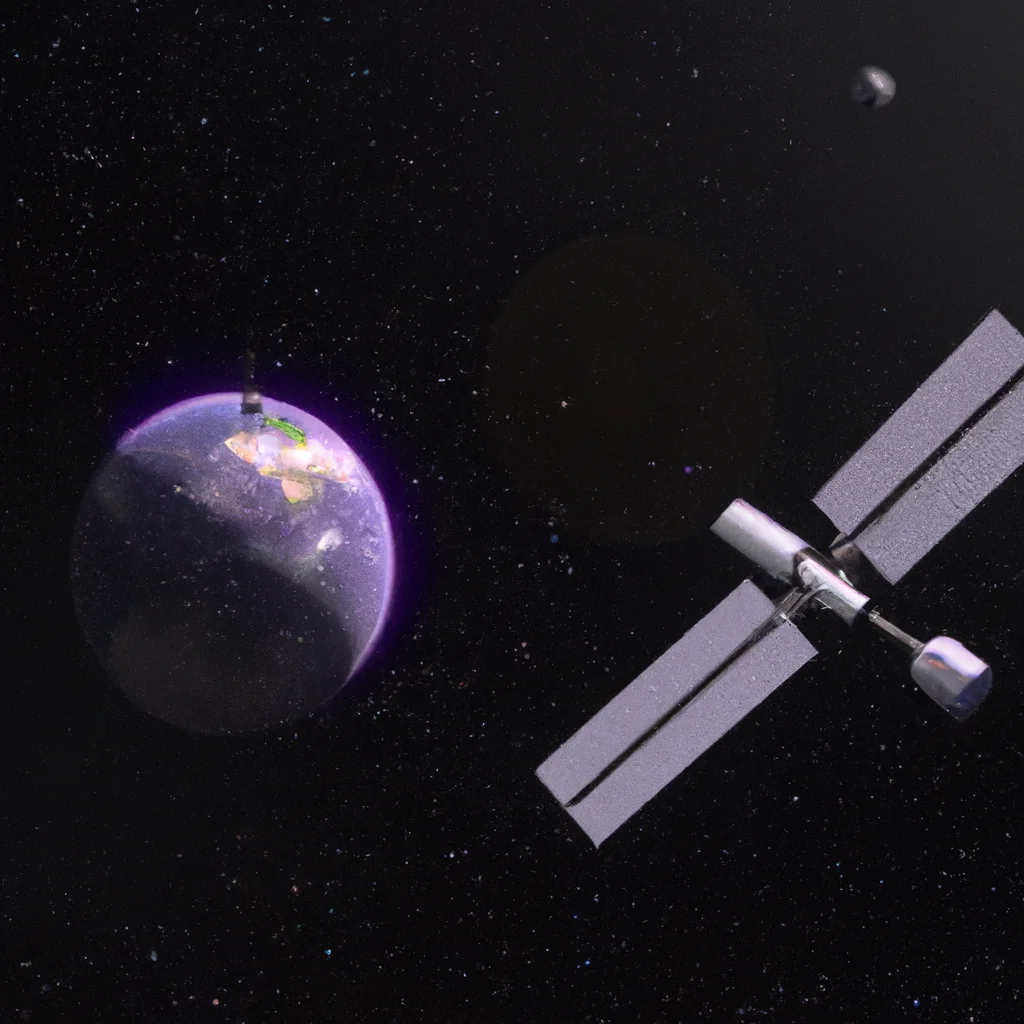How does a satellite maintain its orbit?


How does a satellite maintain its orbit?
How does a Satellite Maintain its Orbit?
Satellites are artificial objects that orbit around the Earth, providing crucial communication, navigation, and observation services. These machines operate in space, where there is no air resistance or friction, allowing them to remain in orbit for extended periods. But how do they stay up there? This article explores the mechanisms behind satellite orbit, including gravitational force, Kepler’s laws, orbital velocity, geostationary orbit, orbital mechanics, and Newton’s laws of motion.
Gravitational Force
The primary force responsible for satellite orbit is the gravitational force. This force is the mutual attraction between two objects that have mass. In this case, the Earth and the satellite are the objects involved. The Earth’s mass creates a gravitational field that attracts the satellite towards it. The strength of this force depends on the distance between the two objects and their masses. The closer the objects are, the stronger the force, and the heavier the objects are, the stronger the force.
Kepler’s Laws
Johannes Kepler, a German astronomer, discovered three laws of planetary motion that also apply to satellites. The first law states that a satellite moves in an elliptical orbit around the Earth, with the Earth at one of the focal points. The second law, also known as the law of equal areas, states that a satellite covers equal areas in equal time intervals. This means that a satellite moves faster when it is closer to the Earth and slower when it is farther away. The third law, also known as the law of harmonies, states that the square of the orbital period of a satellite is proportional to the cube of the semi-major axis of its orbit.
Orbital Velocity
The velocity of a satellite is the speed at which it moves around the Earth. It is determined by the gravitational force and the centrifugal force, which is the force that opposes the gravitational force and keeps the satellite from falling towards the Earth. The centrifugal force is equal in magnitude to the gravitational force but acts in the opposite direction. The balance between these two forces determines the orbital velocity of the satellite. The higher the altitude of the satellite, the slower its velocity, and the lower the altitude, the faster its velocity.
Geostationary Orbit
A geostationary orbit is a circular orbit around the Earth, where the satellite’s orbital period is the same as the Earth’s rotation period. This means that the satellite appears to be stationary in the sky, making it ideal for communication and broadcasting services. To achieve a geostationary orbit, a satellite must be placed at an altitude of 35,786 km above the Earth’s equator and move at a speed of 3.07 km/s.
Orbital Mechanics
Orbital mechanics is the study of the motion of objects in space, including satellites. It involves applying Newton’s laws of motion to determine the trajectory and velocity of a satellite. Newton’s first law states that an object at rest will remain at rest, and an object in motion will remain in motion with a constant velocity unless acted upon by an external force. Newton’s second law states that the acceleration of an object is directly proportional to the force applied to it and inversely proportional to its mass. Newton’s third law states that for every action, there is an equal and opposite reaction.
Conclusion
Satellites maintain their orbit around the Earth through the interplay of gravitational force, Kepler’s laws, orbital velocity, geostationary orbit, orbital mechanics, and Newton’s laws of motion. These mechanisms ensure that satellites remain in their designated positions for as long as required, providing crucial services to people around the world. As technology advances, the demand for satellite services is likely to increase, making it essential to understand how they work and how to maintain them.
Recent Posts
How do I create an engaging and informative online quiz or assessment?
Creating an engaging and informative online quiz or assessment can be a powerful tool for… Read More
What are the most effective methods for managing and reducing work-related stress in the hospitality industry?
Work-related stress is a common issue in the hospitality industry, where employees often face long… Read More
How can I improve my assertiveness and communication skills in a leadership position?
In a leadership position, assertiveness and effective communication skills are crucial for success. Being able… Read More
What are the key elements of a successful employee recognition and rewards program?
Employee recognition and rewards programs play a crucial role in motivating and engaging employees, as… Read More
How do I effectively manage and respond to customer feedback and reviews?
Customer feedback and online reviews play a crucial role in shaping a company's reputation and… Read More
What are the best strategies for effective time management as a stay-at-home parent?
Effective time management is crucial for stay-at-home parents who juggle multiple responsibilities on a daily… Read More